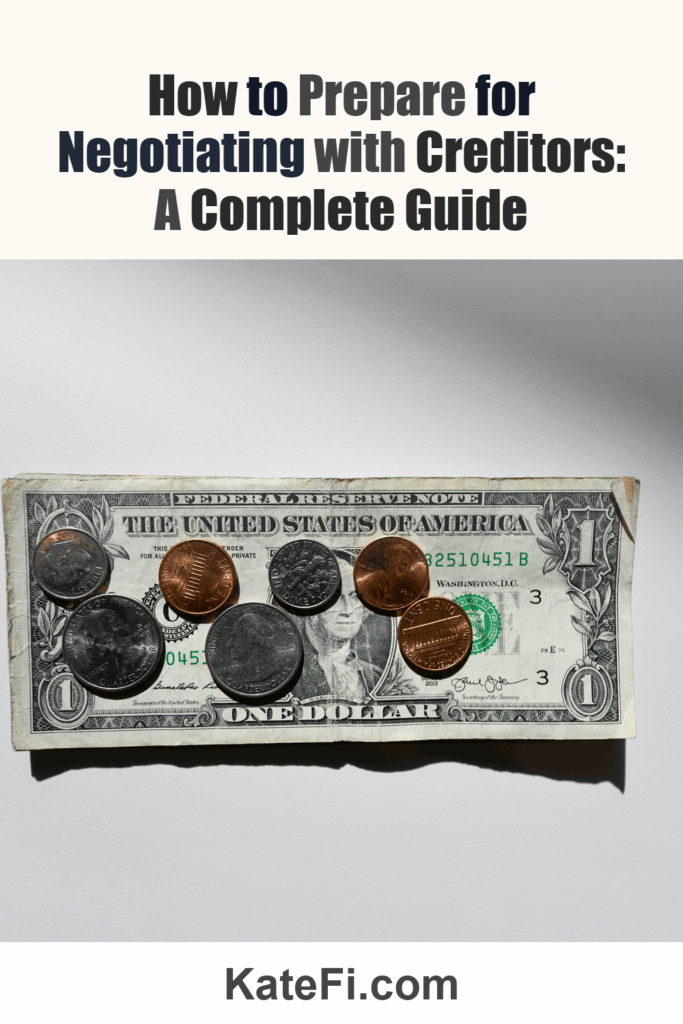What You’ll Learn on the Call
- Estimated timeline and monthly payment range
- How credit may be affected in the short term
- What documents to gather to move faster
Love our content? Show your support by following us — pretty please!🥺
FOLLOW ON PINTEREST
Hi! I’m Kate, the face behind KateFi.com—a blog all about making life easier and more affordable.
Not available in IL, KS, OR, TN, UT, WV.
How to Save $ $1,000 a Month for Debt Relief: A Step-by-Step Plan
Managing debt can often feel like an uphill battle. With rising interest rates and unexpected expenses, many find themselves grappling with overwhelming financial burdens. The good news is that it is possible to save $1,000 a month to achieve debt relief, and with a structured plan in place, you can effectively navigate the complex world of debt relief options without falling prey to scams. This post will guide you through a comprehensive step-by-step roadmap for effective debt management, while also stressing the importance of legitimate solutions and how to avoid common pitfalls.
Understanding Your Debt Relief Options
Before you can save money toward debt relief, it’s essential to understand the available avenues you can pursue. There are three primary options: Debt Settlement, Debt Management Plans (DMP), and Debt Consolidation. Below, you’ll find a quick overview of each option along with some advantages and disadvantages.
| Debt Relief Option | Advantages | Disadvantages |
|---|---|---|
| Debt Settlement | Can significantly reduce total debt | May hurt your credit score; requires lump-sum payment |
| Debt Management Plan (DMP) | Often lower monthly payments; credit counseling support | Requires a commitment to a strict budget; takes longer to pay off debt |
| Debt Consolidation | Simplifies multiple payments into one; potentially lower interest rates | May result in higher total debt if not managed correctly |
Now that you’re familiar with these options, let’s delve into how you can start saving $1,000 each month for your debt relief journey.
Step 1: Analyze Your Current Financial Situation
Before making any moves, assess where you currently stand financially. Gather all relevant documents, including:
- Monthly income statements
- Current debts and interest rates
- Monthly expenses (fixed and variable)
- Any assets or savings you may have
Once you have all the necessary information at hand, you can make an informed decision about your next steps. It’s also wise to conduct a quick review of your credit report to understand your credit impact. You can check your report for free at AnnualCreditReport.com.
Step 2: Create a Monthly Budget
A solid budget is essential for saving money. Start by listing your income and all expenses, then identify areas where you can cut back. Here’s a simple checklist to help you get started:
#### Budget Checklist
- Housing: Can you reduce costs by refinancing or negotiating your rent?
- Utilities: Are there any unnecessary services you can cancel?
- Groceries: Have you set a strict limit, or are there items you can buy in bulk?
- Transportation: Can you carpool, take public transport, or reduce driving costs?
- Entertainment: Are there free events or activities you can engage in?
Once you’ve identified potential savings, channel that money into a dedicated debt relief account.
Step 3: Decision Tree for Debt Relief Options
When you’re ready to tackle your debt, use this decision tree to determine your best option:
- Do you have multiple high-interest debts?
- Yes → Consider Debt Consolidation.
- No → Go to question 2.
- Can you afford to pay off your debt in full with a lump-sum payment?
- Yes → Consider Debt Settlement.
- No → Go to question 3.
- Would you benefit from professional guidance in managing your debt?
- Yes → Consider a Debt Management Plan (DMP).
- No → Stick to your budget and continue making payments.
Utilizing this decision tree can clarify which path may be best for your unique financial situation.
Step 4: Setting Up a Savings Plan
To save $1,000 a month, consider automating your savings. Set up a separate savings account solely for your debt relief fund. When you receive your paycheck, automatically transfer a set amount (for example, $250 per week) into this account. You can achieve your goal through a mix of budgeting, cutting back on non-essentials, and redirecting that money to savings.
Common Debt Relief Scams to Avoid
Unfortunately, the world of debt relief is rife with scams. As you pursue your options, keep an eye out for these common warning signs:
- High Upfront Fees: Legitimate companies typically do not charge high fees before delivering services.
- Promises of Immediate Relief: If it sounds too good to be true, it probably is. Debt relief takes time and effort.
- Pressure Tactics: Avoid companies that rush you to sign up or push you toward quick fixes.
- Lack of Transparency: Always seek companies that offer clear and straightforward information about their services and fees.
For a trustworthy approach, getting a free consultation can provide clarity on your situation and potential relief options.
Step 5: Prepare Documentation for Faster Review
To speed up the process when seeking help, ensure you have the following documents ready:
- A recent pay stub or income verification
- A copy of your credit report
- A list of your current debts, including balances and interest rates
- Monthly expense statements
Having these documents handy will facilitate a quicker evaluation by any debt relief company you choose to work with.
Step 6: Track Your Progress
As you implement your savings plan and begin engaging with debt relief options, keep track of your progress. Use a spreadsheet or budgeting app to log your savings and monitor your debt levels. This accountability will motivate you to stick to your goals.
Step 7: Seek Professional Guidance
While it’s possible to navigate debt relief independently, working with professionals can provide a solid foundation. Consider reaching out to certified credit counselors who can provide tailored advice based on your specific financial situation. They can also help you understand the nuances of each option, guiding you toward the best path forward.
To explore your options, don’t hesitate to
✅ See If You Qualify for Debt Relief
The Impact on Your Credit Score
Engaging in debt relief options will impact your credit score differently, depending on which route you take. Here’s a quick overview:
- Debt Settlement: Typically results in a drop in your credit score, but can improve your financial situation in the long run.
- Debt Management Plan: May have a minimal effect initially but could lead to better credit standing once debts are paid off.
- Debt Consolidation: Can improve your credit score by reducing your credit utilization ratio, provided you manage payments responsibly.
Conclusion
Saving $1,000 a month for debt relief is a realistic goal when approached with a structured plan. By assessing your current financial situation, creating a budget, exploring debt relief options, and avoiding scams, you can work towards regaining control of your financial future.
Don’t forget the importance of professional guidance—consider getting a free consultation to evaluate your options.
Together, let’s pave the way toward your financial freedom! Remember, your journey may not be linear, but each step you take brings you closer to achieving the relief you deserve.
Important: This content is for education only—not legal, tax, or financial advice. Results and eligible programs vary by situation and state. Fees apply if you enroll and complete a program. Debt relief can affect credit; missed payments may lead to collections/lawsuits. Not available in IL, KS, OR, TN, UT, WV.
Understand pros/cons of settlement vs consolidation vs DMP for your exact mix of debts.
Not available in IL, KS, OR, TN, UT, WV.
Lower Your Unsecured Debt
If you have $5,000+ in credit card or personal loan debt, a free consult can review options like settlement or hardship plans.
- One-on-one call to review your debts and goals
- See potential monthly payment reductions
- No obligation to enroll
Not available in IL, KS, OR, TN, UT, WV.
👉 Start Your Free Debt Relief Review
Not available in IL, KS, OR, TN, UT, WV.






















